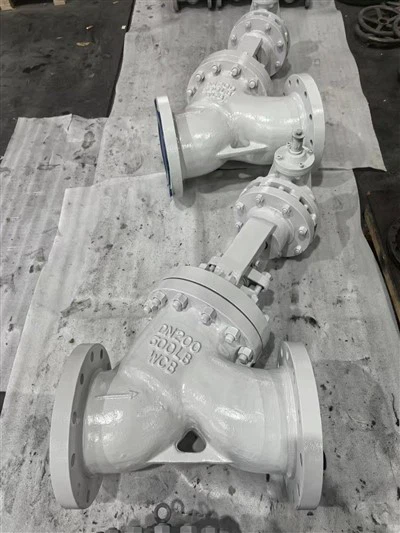Hey there! As a check valve supplier, I often get asked if check valves can be used in power generation plants. Well, the short answer is a resounding yes! In this blog, I'll dive into the details of why check valves are not only useful but also essential in power generation plants.
First off, let's talk about what a check valve is. A check valve is a simple yet crucial device that allows fluid (like water, steam, or gas) to flow in one direction only. It prevents backflow, which can cause a whole host of problems in a power generation system.
In power generation plants, there are different types of processes going on, and check valves play a vital role in each of them. For example, in a steam turbine power plant, steam is used to turn the turbine and generate electricity. Check valves are used to ensure that the steam flows in the right direction through the system. If there's backflow of steam, it can damage the turbine blades and reduce the efficiency of the power generation process.
One of the most common types of check valves used in power plants is the Swing Type Check Valve. This type of valve has a disc that swings on a hinge. When the fluid flows in the correct direction, the disc opens, allowing the fluid to pass through. But when there's a reverse flow, the disc swings shut, blocking the backflow. Swing type check valves are great because they can handle large flow rates and are relatively simple in design, which means less maintenance.
Another popular option is the Single Plate Wafer Type Check Valve. These valves are lightweight and compact, making them easy to install in tight spaces. They have a single plate that moves to open and close the valve. They're often used in applications where space is limited, such as in smaller power generation units or in piping systems where a more streamlined design is needed.
The Butterfly Check Valve is also commonly used in power plants. It has a disc that rotates around a central axis to control the flow. Butterfly check valves are known for their quick opening and closing action, which is important in power generation systems where rapid changes in flow can occur. They're also relatively inexpensive and easy to maintain.
Now, let's look at some specific applications of check valves in power generation plants. In the boiler feedwater system, check valves are used to prevent the backflow of water into the boiler. The boiler is a critical component of the power plant, and any backflow of water can cause water hammer, which can damage the boiler and other equipment. Check valves ensure that the water flows smoothly from the feedwater pump to the boiler, maintaining the proper pressure and flow rate.
In the condenser system, check valves are used to prevent the backflow of condensate. The condenser is responsible for converting steam back into water, and the condensate needs to be pumped out of the condenser and back into the system. Check valves make sure that the condensate only flows in one direction, preventing any issues that could arise from backflow.
In the cooling water system, check valves are used to control the flow of cooling water. The cooling water is used to cool down various components of the power plant, such as the generators and transformers. Check valves ensure that the cooling water flows efficiently through the system, preventing any backflow that could reduce the cooling efficiency.
One of the key benefits of using check valves in power generation plants is that they improve the safety of the system. By preventing backflow, they reduce the risk of equipment damage, water hammer, and other potentially dangerous situations. This not only protects the expensive equipment in the power plant but also ensures the safety of the workers.
Another benefit is that check valves improve the efficiency of the power generation process. When the fluid flows in the right direction without any backflow, the system can operate at its optimal level. This means that more electricity can be generated with less energy input, which is good for both the environment and the bottom line.
Of course, like any piece of equipment, check valves need to be properly maintained. Regular inspections and maintenance can help ensure that the check valves are working correctly and that they're not showing any signs of wear or damage. It's also important to choose the right type of check valve for the specific application in the power plant. Factors such as the flow rate, pressure, temperature, and type of fluid need to be considered when selecting a check valve.


In conclusion, check valves are an essential part of power generation plants. They play a crucial role in ensuring the safety, efficiency, and reliability of the power generation process. Whether it's a large-scale power plant or a small, decentralized power generation unit, check valves are a must-have component.
If you're in the power generation industry and you're looking for high-quality check valves, I'd love to talk to you. We have a wide range of check valves available, including the Swing Type Check Valve, Single Plate Wafer Type Check Valve, and Butterfly Check Valve. Our team of experts can help you select the right check valve for your specific needs. So, if you're interested in learning more or starting a procurement discussion, don't hesitate to reach out.
References
- "Power Generation Systems: Principles, Design, and Operation" by John Smith
- "Valve Handbook" by Robert Johnson
- Industry standards and guidelines for power generation plants





